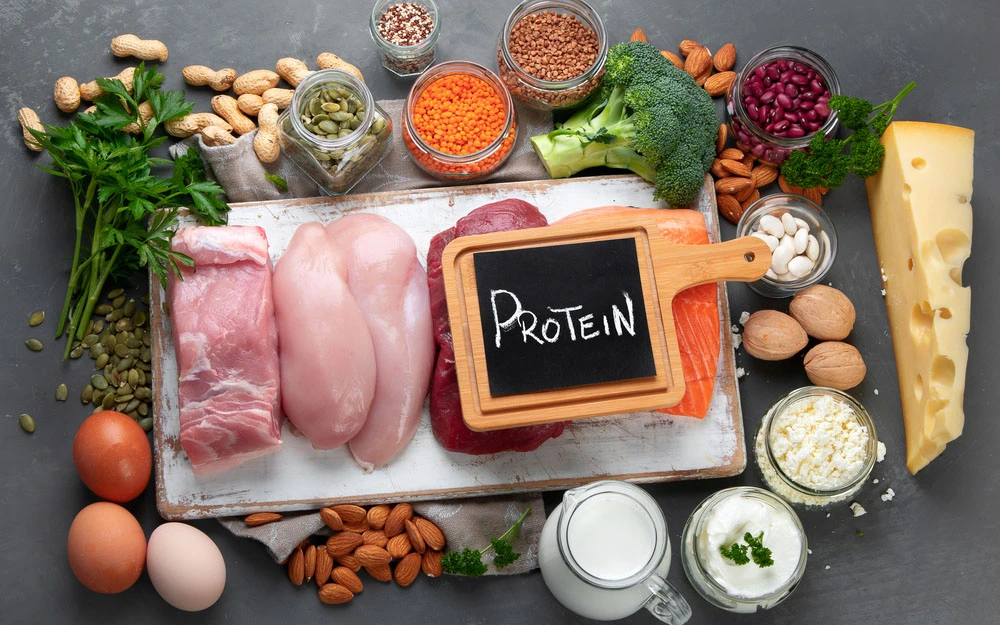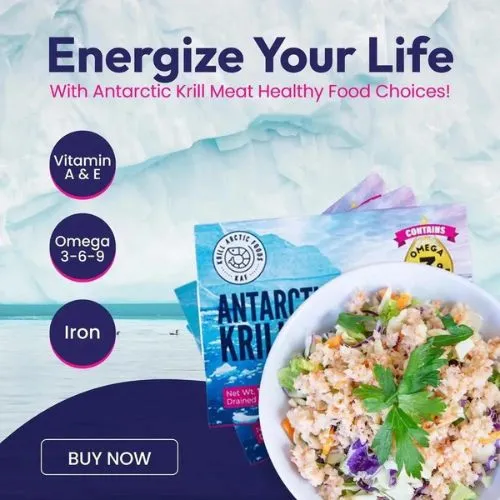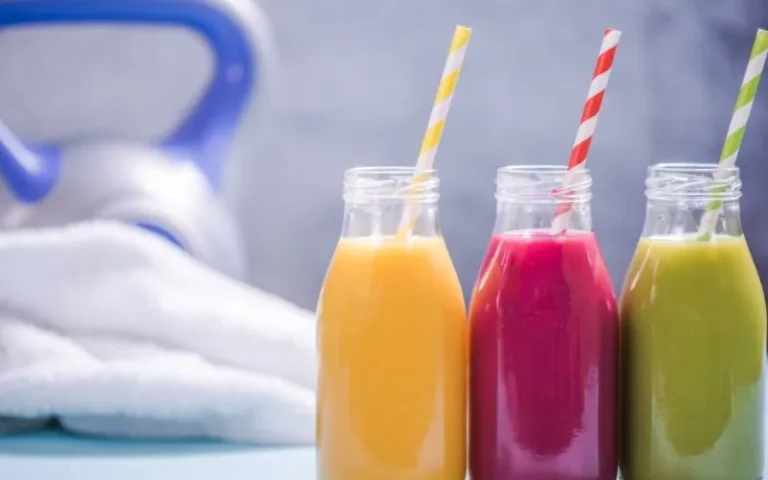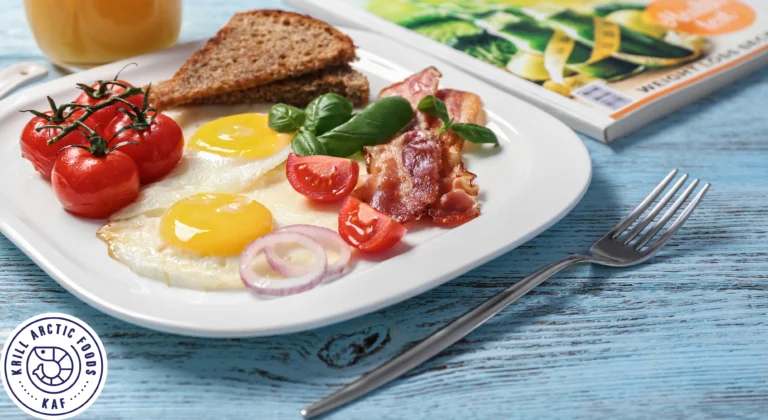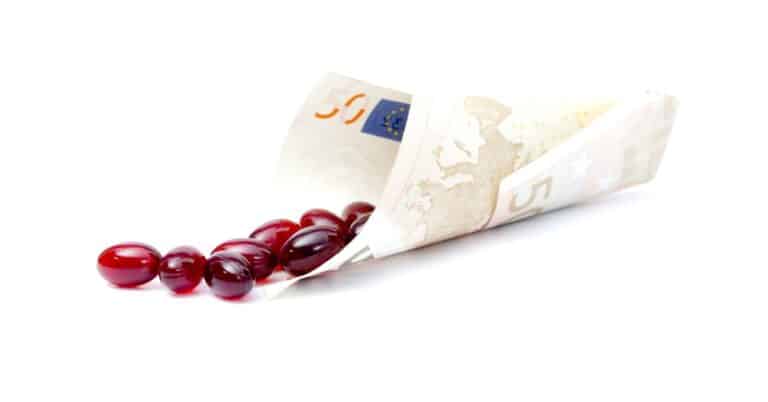When it comes to maintaining a healthy and balanced diet, protein is essential. It supports muscle growth, repairs tissues, and plays a crucial role in maintaining immune function and energy levels. Including high-quality protein in your diet is also key for long-lasting fullness, making it an excellent choice for those looking to manage weight and improve overall health.
In this guide to the Top 10 Protein Foods for a Healthy and Balanced Diet, we’ll explore a variety of options—from plant-based sources to lean meats—that are packed with essential amino acids and nutrients.
Whether you’re a fitness enthusiast, someone focused on balanced eating, or just looking to boost energy, these top protein foods can support your body’s needs while adding variety and flavor to your meals. Let’s dive into the best choices to keep your diet protein-rich, nutritious, and fulfilling!
Choosing Protein Quality Over Quantity: Factors to Consider
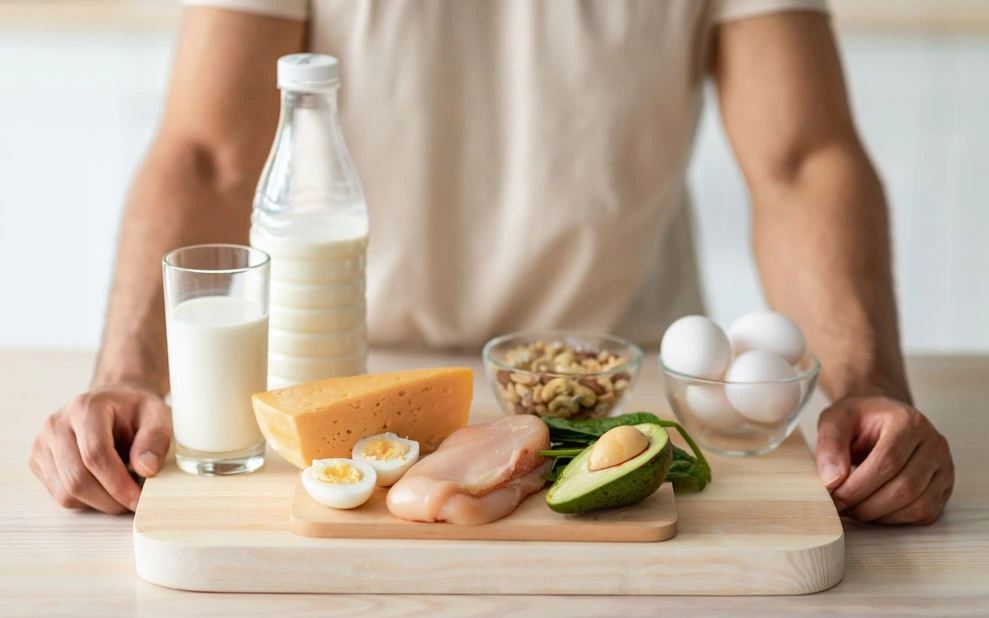
When it comes to protein, it’s easy to focus on “more is better.” But what often matters even more is the quality of the protein we’re eating. Protein quality depends on factors like amino acid content, digestibility, and nutrient density—elements that can make a big difference in how effectively our bodies can use the protein we consume. Let’s break down these factors in a way that can guide you to better protein choices for a well-balanced diet.
1. Amino Acid Profiles:
Think of amino acids as puzzle pieces that form complete proteins when they all fit together. Some foods, like chicken, eggs, and quinoa, are “complete” proteins, meaning they contain all the essential amino acids your body can’t produce on its own. These complete proteins support everything from muscle repair to immune function. On the other hand, foods like beans and grains are “incomplete” proteins—they’re missing one or more amino acids. But don’t worry! Pairing foods like beans with rice or nuts with seeds can create a “complete” amino acid profile, ensuring you get the full benefit.
2. Digestibility: How Well Does Your Body Use It?
It’s not just about what we eat but what our bodies can actually absorb and use. Some proteins are easier to digest, like those from animal sources, meaning our bodies can absorb their nutrients more efficiently. Plant proteins, though a bit harder to digest, come with their own set of benefits—fiber, antioxidants, and more. So, while choosing high-quality animal sources is beneficial, including a mix of plant proteins is a win-win for nutrition.
3. Nutrient Density: More Than Just Protein
Foods like salmon and krill meat offer protein plus omega-3 fatty acids, which support heart health, while others like Greek yogurt provide calcium for bone health. When you choose protein sources that come “packed” with extra nutrients, you’re getting more value for every bite. For instance, consider nuts, which offer protein along with vitamin E, or eggs, which deliver choline—a nutrient linked to brain health.
4. Bioavailability: How Well Nutrients Are Utilized
Bioavailability measures how effectively your body can use the nutrients found in a protein source. Proteins with higher bioavailability, such as those from eggs and dairy, allow more of the protein’s amino acids to reach the bloodstream, making them excellent choices for muscle repair and energy. Certain plant proteins may have slightly lower bioavailability due to fiber and other compounds, which can inhibit absorption. Nonetheless, a variety of sources can help meet bioavailability needs.
5. Source Sustainability: Environmental and Ethical Impact
The sustainability of protein sources is becoming an important factor in dietary choices. Plant proteins, like lentils and beans, generally have a lower environmental impact than some animal proteins, as they require fewer resources to produce. Sustainable animal sources, such as responsibly sourced fish, also offer high-quality protein while considering environmental impact. Choosing a mix of sustainable sources supports both personal and planetary health.
Choosing a variety of protein sources with a mix of complete and complementary proteins, high digestibility, and added nutrients can help you create a balanced, protein-rich diet. Consider adding these quality proteins to your meals and enjoy the full range of health benefits they bring. Remember, it’s not just about “filling up”; it’s about fueling up with the best choices!
Would you like help selecting some nutrient-dense protein options? Let’s explore.
Top 10 Protein Foods for a Healthy Diet
Including high-quality protein sources in your diet is essential for energy, muscle health, and overall wellness. Let’s look at some of the top protein-rich foods that can boost a balanced diet.
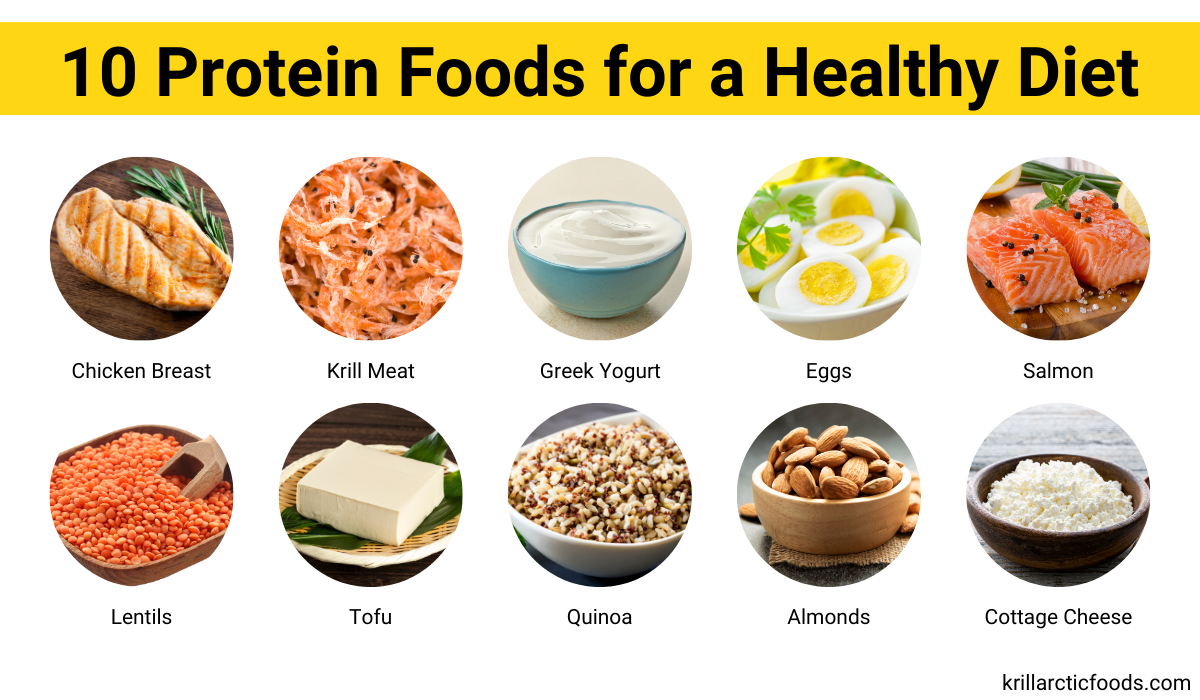
Animal-Based Protein Sources
1. Chicken Breast
Chicken breast is an ideal lean protein, delivering approximately 26 grams of protein per 3-ounce serving with very little fat—perfect for building muscle while keeping calories low. Rich in B vitamins, chicken supports energy production and metabolism. Grill or bake with rosemary and lemon for added antioxidants and flavor, making it a top choice for weight management and fitness goals.
2. Krill Meat
Krill meat might be less common but it’s loaded with nutrients. With around 20 grams of protein per 100 grams, krill offers a unique combination of protein and omega-3 fatty acids that benefit heart health and brain function. Additionally, it contains astaxanthin, an antioxidant that may reduce inflammation. Use krill as a nutrient-rich alternative to shrimp in stir-fries or salads, combining protein with essential fats.
3. Greek Yogurt
Greek yogurt provides about 10 grams of protein per 100 grams along with probiotics for gut health. Its creamy texture and versatile flavor make it ideal for both sweet and savory dishes. Enjoy it as a snack with fresh fruit or blend it into smoothies for a morning protein boost, helping support digestion and muscle recovery.
4. Eggs
Eggs offer a complete protein profile with 6 grams per large egg, packed with essential amino acids and nutrients like choline, which supports brain and liver health. As a low-cost, versatile protein source, eggs can be scrambled, boiled, or poached for an easy protein hit at any meal, helping to keep energy steady throughout the day.
5. Salmon
Salmon is rich in protein (around 22 grams per 3-ounce serving) and omega-3s, which are beneficial for heart health, cognitive function, and skin health. Wild-caught varieties provide higher nutrient density. Grill or bake with herbs for a meal that supports muscle maintenance and offers potent anti-inflammatory benefits, ideal for active individuals and those focusing on cardiovascular health.
Plant-Based Protein Sources
6. Lentils
Lentils offer 18 grams of protein per cooked cup and are high in fiber, iron, and folate, supporting digestion, energy levels, and heart health. Their mild flavor makes them perfect for soups, salads, and curries. Lentils are especially beneficial for those looking to manage blood sugar levels and stay full longer.
7. Tofu
Tofu is a complete plant protein with 8 grams per 100 grams, offering all essential amino acids. It’s also rich in calcium and iron, which support bone health and energy levels. Grill, bake, or stir-fry tofu to add protein to your meals while keeping calories and fat low, making it a staple for vegetarians and vegans.
8. Quinoa
Quinoa, a protein-rich seed, provides 8 grams of complete protein per cooked cup, along with fiber, magnesium, and antioxidants. It’s a great choice for those looking to maintain energy without heavy carbs, and it’s gluten-free. Use quinoa as a base for salads or bowls to create filling, nutrient-dense meals that support muscle repair and balance blood sugar.
9. Almonds
Almonds contain 6 grams of protein per ounce, plus healthy fats, fiber, and vitamin E, which is beneficial for skin and heart health. They make an easy on-the-go snack or a topping for salads and oatmeal, giving you sustained energy and nutrients that support skin and brain function.
10. Cottage Cheese
Cottage cheese is packed with around 14 grams of protein per half-cup, along with calcium and B vitamins that support bone health and energy. Its high casein content offers slow-digesting protein, making it ideal for prolonged muscle recovery and satiety. Enjoy it with fruit or as a savory dip, perfect for post-workout snacking or evening meals.
Creating Complete Proteins on a Plant-Based Diet: Simple Food Combos for Essential Nutrition
When following a plant-based diet, getting all essential amino acids can sometimes feel like piecing together a puzzle. While animal proteins come “ready-made” with all nine essential amino acids our bodies need, most plant proteins are naturally incomplete. This means they’re missing one or more amino acids that are key to supporting our body’s processes, like building muscle and supporting immune health.
So, how do you make sure you’re getting a “complete” protein profile on a plant-based diet? Simple: combine different plant proteins! By pairing certain foods, you can easily create a complete amino acid profile, giving your body the nutrients it needs. Here are a few easy and delicious combinations that make complete proteins:
- Lentils + Rice: Together, these two make a classic, nutrient-dense combination, commonly found in dishes around the world. The amino acids in lentils balance perfectly with those in rice, creating a satisfying, protein-rich meal.
- Tofu + Quinoa: Tofu brings the protein, while quinoa—a complete protein on its own—adds fiber and iron, making this duo a plant-based powerhouse. Add them to stir-fries or salads for a meal that’s as filling as it is nutritious.
- Beans + Corn (like in tacos or salads): Beans, packed with protein and fiber, combine well with corn to create a balanced amino acid profile. Think black bean tacos with corn tortillas or bean and corn salads for easy, protein-filled meals.
- Hummus + Whole Wheat Pita: Chickpeas in hummus pair perfectly with the amino acids in whole wheat pita, creating a snack that’s satisfying and nourishing. It’s great for midday cravings or as a protein boost to a meal.
Creating complete proteins is as simple as mixing and matching foods, so feel free to experiment and enjoy a variety of flavors while staying nourished. Making these easy combinations part of your meals can help you achieve balanced, essential nutrition on a plant-based diet.
How to Include These Protein Foods in Your Daily Routine
Incorporating these protein foods into your diet doesn’t have to be complicated. Here are some easy ways to make protein a part of every meal:
1. Breakfast
- Greek Yogurt with Berries: Start your day with Greek yogurt mixed with berries and a drizzle of honey for a delicious, protein-packed breakfast.
- Egg Omelet: Make an omelet with eggs and add some veggies like spinach or bell peppers for added nutrients.
2. Lunch
- Grilled Chicken Salad: Add grilled chicken breast to a fresh green salad with cucumbers, tomatoes, and a light vinaigrette. This keeps your lunch light but full of protein.
- Tofu Stir-Fry: Use tofu in a vegetable stir-fry with bell peppers, broccoli, and soy sauce for a tasty plant-based option.
3. Snacks
- Almonds: Keep almonds handy for a quick protein-rich snack that also provides healthy fats.
- Cottage Cheese with Fruit: Enjoy a bowl of cottage cheese with sliced peaches or pineapple for a refreshing and filling snack.
4. Dinner
- Baked Salmon with Quinoa: Pair baked salmon with a side of quinoa for a balanced dinner that’s rich in protein, omega-3s, and fiber.
- Lentil Soup: Make a comforting bowl of lentil soup that’s perfect for chilly evenings, offering plant-based protein and lots of fiber.
5. Evening Boost
- Cottage Cheese Before Bed: Have a small serving of cottage cheese before bedtime to keep you feeling full through the night, thanks to its slow-digesting casein protein.
Wrap-Up: Making the Most of the Top 10 Protein Foods for a Healthy and Balanced Diet
Including a variety of high-quality protein sources is essential to maintaining a balanced, nutrient-rich diet. The Top 10 Protein Foods we’ve explored—ranging from lean meats and seafood to plant-based powerhouses like lentils and quinoa—offer diverse nutrients to fuel your body and support wellness.
Among these options, Krill meat stands out as a unique, nutrient-dense protein. Packed with omega-3 fatty acids, antioxidants like astaxanthin, and around 20 grams of protein per 100 grams, krill is a versatile choice that brings powerful health benefits to the table. Incorporating krill into your meals not only adds essential proteins but also supports heart health, brain function, and muscle maintenance.
Ready to try krill for yourself? Explore our selection of high-quality canned krill meat, a convenient and nutritious addition to your diet. With its rich protein content and valuable omega-3s, krill can be a game-changer for those seeking a healthier, balanced lifestyle.

